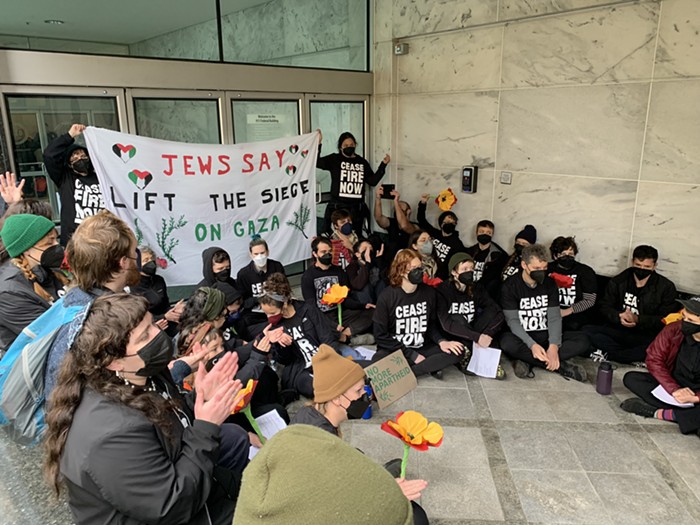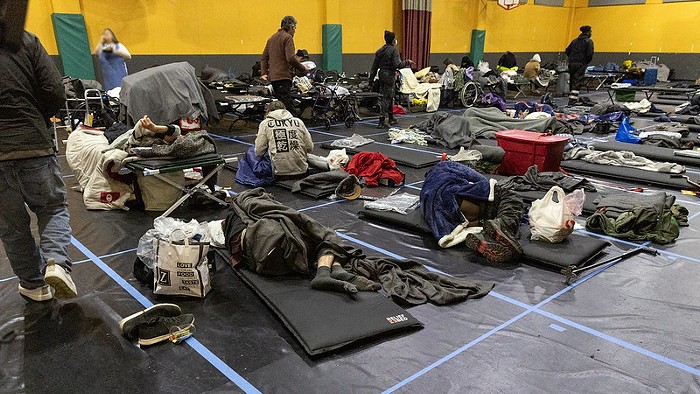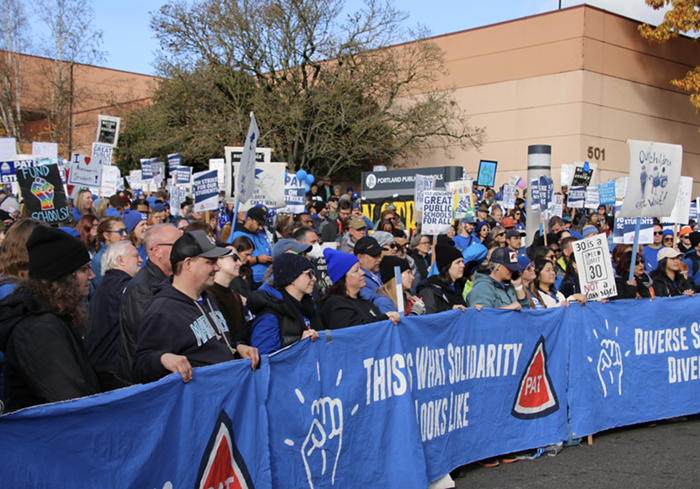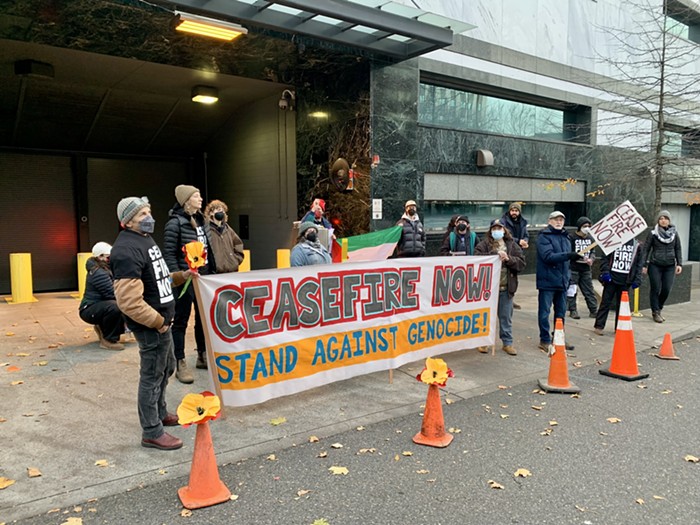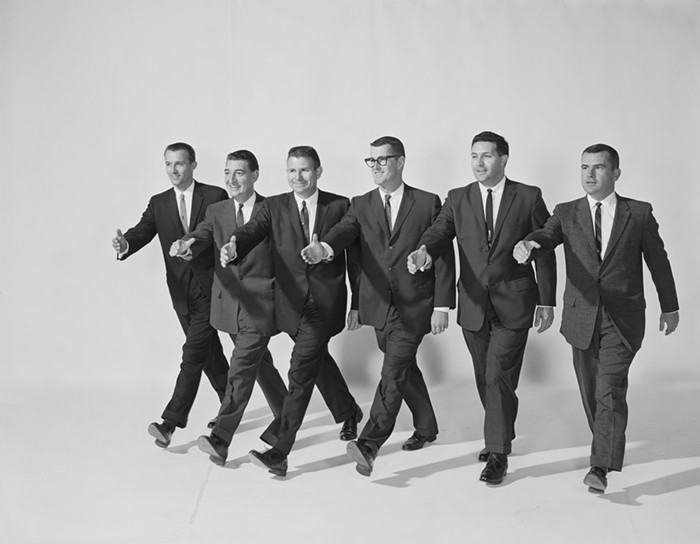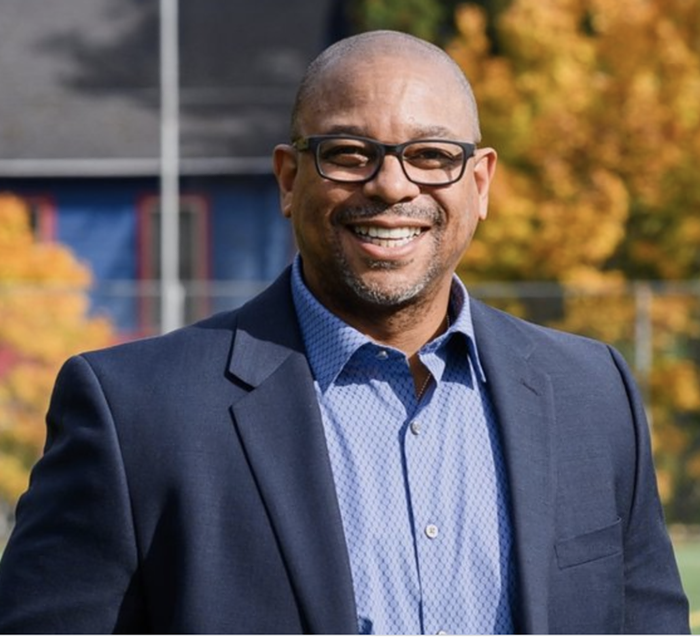
- Illustration by Shawn Dicriscio
By now, plenty of folks have weighed in on the "street maintenance fee," being pushed by Commissioner Steve Novick and Mayor Charlie Hales.
The pair, along with Portland Bureau of Transportation Director Leah Treat, held a series of town hall events beginning in April, pitching citizens on a plan that would levy flat fees on households and businesses to shore up PBOT's hurting revenues.
So citizens have had their say. The city's business lobby had input, too, though through less public channels.
But there's a voice that's not been part of the discussion: The state oil lobby, which killed Portland's last legitimate shot at a street fee.
Those folks are watching the current debate, their chief lobbyist tells the Mercury, and weighing whether to take up the fight against a fee once more. If they do, it's possible the street fee proposal could, once again, die on the vine.
In many ways, the current debate is a near-perfect replica of the one Portland had seven years ago. Back in 2007 and 2008, then-Commissioner (and mayoral candidate) Sam Adams arranged various city stakeholders around a plan he called Safe, Sound and Green Streets. The 15-year, $454 million proposal wasn't exactly like the one Novick and Hales are pushing, but it was close.
And Adams' plan involved more public process and stronger support. While digging through the Mercury archives (well, this one filing cabinet that's in the office that past reporters used and never purged) we came across old polling numbers from David, Hibbitts & Midghall, the same firm that recently carried out telephone surveys around the current street fee proposal.
The documents detail the results of surveys DHM carrie out in January and March 2007. The January 2007 survey showed Portlanders then, like Portlanders now, prioritized safety and maintenance when it came to transportation spending. But they were divided on new ways to fund that work, and didn't much like any suggestion. The most popular option? A sales tax on "luxury items" (like cars), which 39 percent of respondents said was either the best or second-best option. Here's how that list looked:

The second survey took place two months later, and asked "300 motivated voters" about five proposals for raising transportation money. The most popular choice in that poll was a "street maintenance and safety fee," which would have cost households about $31 a year, and raised $15 million over a decade. That option had 60 percent support. Those same motivated voters also supported gas tax increases of 7.73 and 10.3 cents per gallon (52 percent support and 51 percent support, respectively), and a slightly more expensive street fee (54 percent).
There was a new survey the following year. News accounts from July 2008—when Adams was scrambling to save his fully-formed $464 million plan—show 55 percent of voters supported the proposal.
A lot had happened between the first and last polls Adams commissioned. He'd engaged in a seven-month consensus-building process bikeportland.org called "stellar," and whittled down funding options to the Safe, Sound and Green proposal. And he'd secured support from a wide array of stakeholders, including the Portland Business Alliance, media endorsements, and the entirety of the Portland City Council.
One group that was not on board: The Oregon Petroleum Association, which represented service stations who felt they'd be disadvantaged by the fee. Convenience stores and fast-food restaurants also had concerns, along with others.
When Adams' street fee plan passed an initial city council vote with unanimous support in January 2008, the opposition quickly threatened to collect signatures and refer the matter to voters. That prompted then-Mayor Tom Potter to pull his council vote in favor of a ballot measure. (It also prompted then-Commissioner Randy Leonard to bemoan the oil-backed referral effort as "a perversion of democracy.") Adams, feeling the fee needed a unanimous council vote to be legitimate, tabled his proposal, planning to put it to voters the following November.
But the public support wasn't there. The Mercury broke the news when Adams decided to scrap his proposal, focusing instead on getting more transportation money via the state legislature. From our story at the time:
Thanks to the economy, the proposal is currently dead. A poll on the proposal showed that while 29 percent of the 600 voters polled named transportation issues as the "most pressing problem" facing the city—which is a big deal, points out committee member Chris Smith, in that "the public has started to get that transportation is a big problem"—only 55 percent support a monthly $4.54 street maintenance fee to pay for the $464 million backlog in road fixes. With a margin of error of +/- six percent, putting the proposal on the ballot isn't going to happen. "Going to the voters at this time would be very problematic," says pollster Adam Davis.
Which brings us back to the current situation. Willamette Week reported Tuesdaythat Novick and Hales will bring their current proposal before council on May 29. The ordinance might have the votes to pass, too.
But it's also being closely scrutinized by Paul Romain, the Oregon Petroleum Association lobbyist who helped lead the referral threat that ultimately killed Adams' effort. Romain, via e-mail, confirms to the Mercury his clients at the OPA have been watching the street fee discussion, but haven't decided whether to intervene.
"We are just watching right now," Romain said earlier this month. He says there have "been attempts to get our support, but we are not going there. Many businesses are talking about it."
If city council passes the street fee, and the OPA decides to try and refer the matter to voters, polling doesn't seem to bode well for the street fee. A bare majority of 52 percent of respondents said they'd support an $8 monthly fee on households in a recent phone survey. About 51 percent support a $12 monthly fee. And experts say such support can fizzle away during election season.
